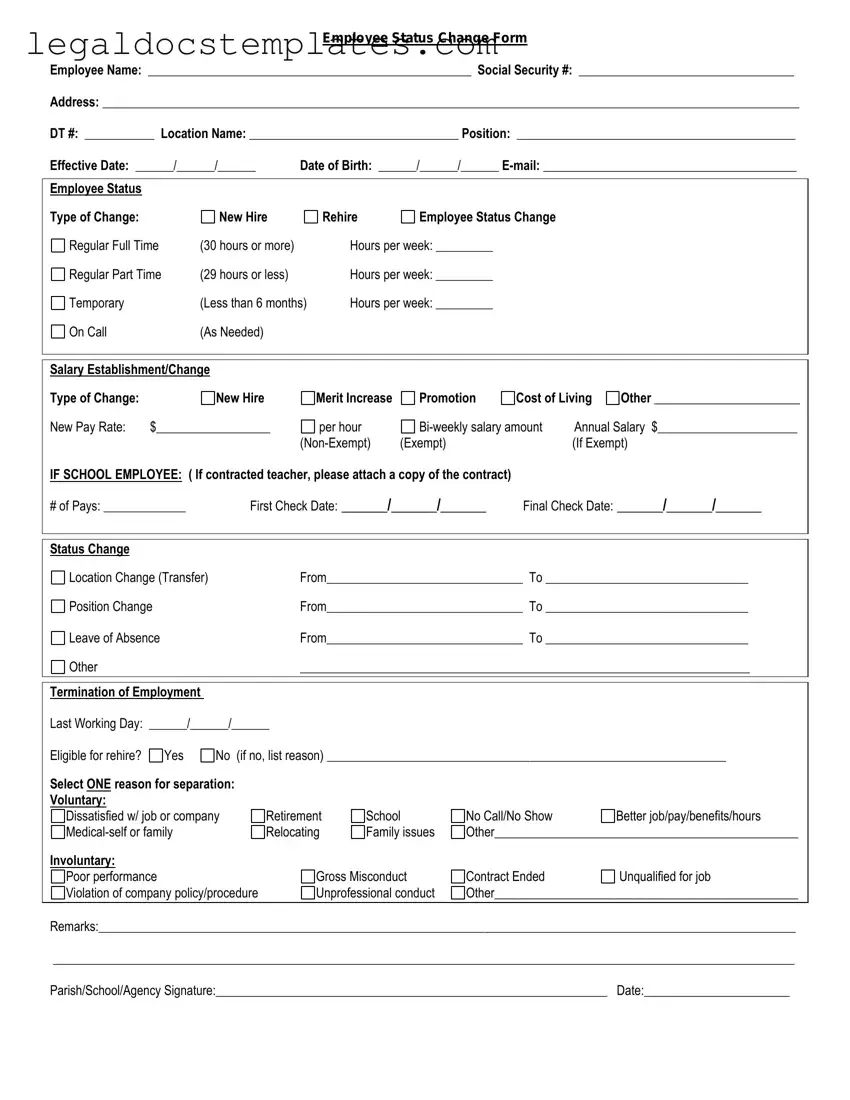An Employment Agreement Amendment mirrors the Employee Status Change form in its function to modify existing terms of an employee’s contract. Like the status change form, it officially records amendments such as salary adjustments, role transitions, or alterations in job responsibilities. Both documents are legally binding and require the consent of both the employer and the employee to take effect, making them formal tools for updating employment terms.
The Job Promotion Letter is akin to the Employee Status Change form as it documents an essential shift in an employee's role within a company. This letter typically outlines the new position, responsibilities, and often, a revised compensation package. Similar to the status change form, it serves as a formal record of the employee's progression within the organization and is essential for HR record-keeping.
A Demotion Letter shares similarities with the Employee Status Change form by documenting a reduction in an employee's rank or responsibilities. It might detail reasons for the demotion, the new job title, and possibly adjusted compensation. Like the status change form, it's a formal notification that requires clear communication and acknowledgment by the employee, emphasizing its significance in maintaining transparent HR practices.
The Salary Adjustment Letter closely resembles the Employee Status Change form when it comes to detailing changes in an employee’s compensation. Whether it's an increase due to a promotion, annual raise, or a pay cut, this letter documents the specifics of the adjustment. Both documents serve as an official acknowledgement of the change in employment terms related to compensation, reflecting their pivotal role in employment records.
The Termination Letter has its parallels with the Employee Status Change form by officially documenting the end of an employee’s tenure with a company. Although it signifies a more final transition, it similarly outlines specific details such as the termination date and any severance arrangements. Both are critical documents for maintaining clear and lawful employment practices.
Internal Transfer Request forms share a purpose with the Employee Status Change form in facilitating movements within a company. While the transfer request may initiate from the employee, both documents formalize the shift in department, location, or job role, ensuring all parties are informed and agreeable to the change. These documents help manage and track employee trajectories within an organization efficiently.
The Return to Work Notice is comparable to the Employee Status Change form as it addresses changes in an employee's work status, particularly reintegration into the workplace after an absence. This notice often outlines any necessary accommodations or adjustments to work schedules or responsibilities. Both documents play a crucial role in transitioning employees smoothly back into their professional roles.
Performance Improvement Plans (PIPs) can be related to the Employee Status Change form as they represent a formal step in addressing performance issues, potentially leading to changes in job status. A PIP outlines specific goals and improvements required from an employee within a defined timeframe. Although its focus is more on remediation, like the status change form, it's a structured approach to modifying employment conditions based on performance evaluations.
The Freelancer to Full-time Employee Offer mirrors aspects of the Employee Status Change form by formalizing a significant shift in employment status and terms. This offer outlines the transition from a non-permanent, freelance position to a full-time role, documenting changes in job responsibilities, compensation, and benefits. Both documents serve to officially acknowledge and record these critical changes in employment dynamics.

